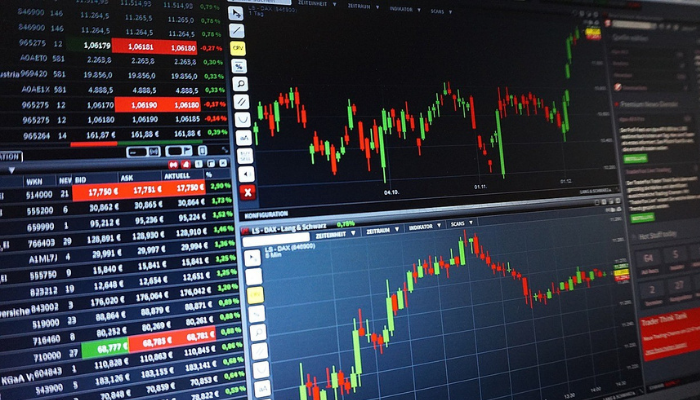How To Trade Boom And Crash Indices in 2024 – Unlocked Strategy

We all know the risk involved in trading the forex market. Boom and Crash are synthetics pairs that looks easy to trade to most times, new traders find it lucky in the market after few profits made on their trades.
When considering a trading strategy to pursue in order to trade boom and crash, it can be useful to compare how much time investment is required behind the monitor, the risk-reward ratio and regularity of total trading opportunities. Each trading strategy on boom and crash will appeal to different traders depending on personal attributes. Matching trading personality with the appropriate strategy will ultimately allow traders to take the first step in the right direction.
It is obvious that many traders have been looking for the right strategy or tricks to use in trading Boom and Crash. In this article, we will be discussing how to trade crash and boom successfully as a professional trader.
What is Boom and Crash?
Boom and Crash are one of the most popular synthetic pairs whereby traders trade in the forex market. Boom and Crash are highly volatile Synthetic Indices especially the Crash 300 and Boom 300 which are offered solely by Deriv broker. It is the only financial instrument in the market that is not pegged against the US dollar. Boom and Crash indices are usually in four different forms as: Boom 1000, Boom 500, Crash 1000, and Crash 500.
The Boom index as the name suggests refers to a sudden large spike in the market that could be as huge as 50-60 pips in the spike While the Crash Index on the other hand refers to a sudden breakdown in the market prices that could be as huge as 50-60 pips. These spikes or breakdowns could occur within the one-minute timeframe chart.
Boom and Crash pairs
Boom pairs:
- Boom 1000
- Boom 500
- Boom 300
Crash pairs:
- Crash 1000
- Crash 500
- Crash 300
How To Trade Boom and Crash
Majority of synthetic traders will tell you that the best way to trade crash and boom is to use some indicators. But how true is that?
Yes, indicators have proven help to some boom and crash traders while it hasn’t been for others. I will be listing some ways to trade these synthetic pairs.
- Learn how Boom and Crash market works
No doubt, one of the first things you need to learn when you want to trade these pairs is to understand how the crash and boom market operates.
Instead of buying and selling indices on a centralised exchange, crash and boom are bought and sold via a network which is programmed.
- Build a trading plan
Building a trading plan is particularly important if you’re new to the markets. Having a boom and crash trading plan helps take the emotion out of your decision making, as well as providing some structure for you when you open and close your positions. You might also want to consider employing a forex trading strategy, which governs how you find opportunity in the market.
Once you have chosen a particular boom and crash trading strategy, it’s time to apply it. Use your favoured technical analysis tools on the markets you want to trade and decide what your first trade should be.
If you are a purely technical trader, then trading the boom and crash market would be at your advantage, you should also pay attention to any developments that look likely to cause volatility in your technical analysis. Upcoming economic announcements, for instance, might well reverberate across the forex markets – something your technical analysis might not consider but it doesn’t work like that in synthetics because it is pure technical.
- Stick to a Strategy
A trading strategy should take into account the style of trading that best suits your goals and available time. For example, day trading is a strategy that involves opening and closing positions within a single trading day, taking advantage of small movements in the price of a currency pair.
On the other hand, position trading is the strategy of holding positions open for a longer amount of time to take advantage of major price movements. Both have different time commitments and different techniques needed for success. Along the way, you can discover more trading strategies that suit you and make sure you stick to it.
- Learn Technical analysis well and analyze the market
After understanding how Boom And Crash indices market works and also building a plan, proper research and analysis should be the foundation of your trading endeavors. Without these, you’re operating on emotion. This doesn’t typically end well.
When you first start researching, you’ll find a whole wealth of forex resources – which may seem overwhelming at first. But as you research on a particular pair, you’ll find valuable resources that stand out from the rest. You should regularly look at current and historical charts, monitor the movement of boom and crash, check indicators and perform other technical analysis before taking your trade.
Now that you know a little more about Boom and Crash, we’ll take a closer look at how to make your first trade and the best technical analysis to use. Before you trade you need to follow a few steps.
READ ALSO: Top 5 Best Nigerian Web Hosting Companies
Best Strategies To Trade Boom and Crash
Forex trading strategies can be either manual or automated methods for generating trading signals. Manual systems involve a trader sitting in front of a computer screen, looking for trading signals and interpreting whether to buy or sell.


Automated systems involve a trader developing an algorithm that finds trading signals and executes trades on its own. The latter systems take human emotion out of the equation and may improve performance.
When choosing a forex trading strategy, it helps to be aware of what type of trader you are and what types of strategies exist. However, it is not as simple as selecting a single trading strategy, as traders can choose to employ a single strategy or combine several.
Firstly, you must define your criteria for selecting a forex trading strategy. You should analyse factors that can help narrow down your search such as:
- How much time you can set aside to trading forex
- What pairs you want to focus on(Boom and Crash?)
- The size of your position
- Whether you’re going long or short
I will be discussing 4 good strategies which can be applied to trading boom and crash successfully like a professional trader. They are;
- PRICE ACTION TRADING
Price action trading involves the study of historical prices to formulate technical trading strategies. Price action can be used as a stand-alone technique or in conjunction with an indicator. Fundamentals are not necessary in boom and crash trading or on all synthetic pairs.
- RANGE TRADING STRATEGY
Range trading includes identifying support and resistance points whereby traders will place trades around these key levels. This strategy works well in market without significant volatility and no discernible trend. Technical analysis is the primary tool used with this strategy.
- TREND TRADING STRATEGY
Trend trading is a simple forex strategy used by many traders of all experience levels. Trend trading attempts to yield positive returns by exploiting a markets directional momentum.
Trend trading generally takes place over the medium to long-term time horizon as trends themselves fluctuate in length. As with price action, multiple time frame analysis can be adopted in trend trading.
- SCALPING STRATEGY
Scalping in forex is a common term used to describe the process of taking small profits on a frequent basis. This is achieved by opening and closing multiple positions throughout the day. This can be done manually or via an algorithm which uses predefined guidelines as to when/where to enter and exit positions.
Types of traders who can trade Boom and crash
Anyone can become a trader but do you really know the kind of trader you are in the boom and crash indices market? Before you decide, read this below;
- Scalpers
Forex traders like me who trades boom and crash prefer short-term trades held for just minutes, or those who try to capture multiple price movements, would prefer scalping. Scalping is basically my favourite strategy because I don’t have to waste too much time in the market.
Trading boom and crash can be high risk sometime because of sudden spikes that might occur in a matter of minutes or seconds of ticks.
Boom and crash Forex scalping focuses on accumulating these small but frequent profits as well as trying to limit any losses. These short-term trades would involve price movements of just a few pips, but combined with high leverage, a trader can still run the risk of significant losses.
This boom and crash forex strategy is typically suited to those that can dedicate their time to the higher-volume trading periods, and can maintain focus on these rapid trades.
- Day traders
If you want to trade for short periods, but aren’t comfortable with the fast-paced nature of scalping, day trading is an alternative forex trading strategy. This typically involves one trade per day, which isn’t carried overnight. Profit or losses are a result of any intraday price changes in the relevant pair.
This type of trading would require sufficient time to research and monitor the trade, as well as a good understanding the movement of the pair you’re trading.
- Swing traders
For boom and crash traders who prefer a mid-term trading style where positions can be held for several days, there is swing trading, which aims to make a profit out of changes in price, by identifying the ‘swing highs’ or ‘swing lows’ in a trend.
Although this strategy normally means less time fixating on the market than when day trading, it does leave you at risk of any disruption overnight, or gapping.
- Position traders
The most patient boom and crash traders may choose the forex position trading, which is less concerned with short-term market fluctuations and instead focuses on the long term. Boom and crash position traders will hold forex positions for several weeks, months, or even years. The aim of this strategy is that the currency pair’s value would appreciate over a long-term period.
Forex position trading is more suited for those who cannot dedicate hours each day to trading but have an acute understanding of market structure. Although this strategy is too risky for Boom and crash position traders because the synthetics market is programmed with an algorithm to rise and fall when it gets to a certain region. Boom and crash traders should be very selective with their kind of strategy.
In Conclusion
Rounding up the best way to trade boom and crash indices, boom and crash traders should make sure they pick a very good strategy that would work for them. If you trade boom and crash and you notice that a particular strategy works well for you, i’d advice you stick to it.
Also note that;
- Boom and crash indices are known for their sudden spikes. Hikes and drops that occur rapidly and can be as big as 50+ pips.
- The boom phase occurs when an upside spike results in sudden price increases.
- The crash phase is when prices decrease extremely fast. Positions can close at the end of a spike, resulting in heavy losses quickly.
A trading strategy should be chosen based on a trader’s personal trading style, trading psychology, market exposure, and knowledge, along with trading experience. Here’s a financial resource that can help you make some financial decisions.
Technical analysis and a solid understanding of market structure are the foundational factors for successful boom and crash trading. Indicators should be used only once you have first analyzed the market.
I hope this article helped you to learn something about boom and crash? Please, you can leave a comment below this article about boom and crash trading strategies and you can still tell us a strategy hat works well for you.







